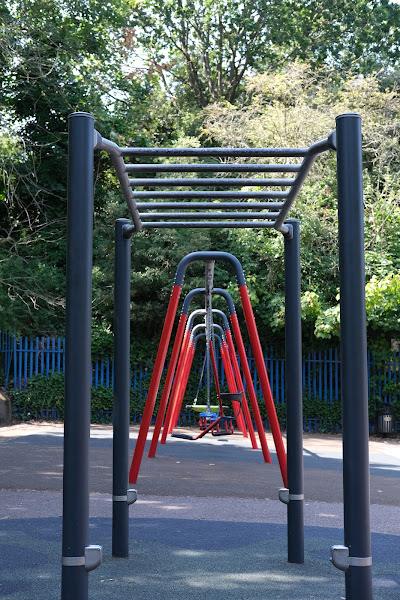Call me odd, but I find it fascinating to watch someone turn a jungle into a neat lawn, revealing paths and sharpening borders in the process, or jet-washing a grimy patch of hard standing in front of someone’s house to reveal an area of warm pink stone.
I have two thoughts at some point in these videos: a)
Jeez, this guy is putting a s**t ton of work in here, and b)
how could anyone let it get so bad. For most of the garden videos, the answer is that the owner is old, infirm, or absent. This can apply to the jet-washing videos but not so much.
(I too have been solvenly in these matters, so there’s no judgement here.)
This is the UK. It’s damp
all the time (except for ten days a year when it’s too hot) and so moss grows
all the time on any north-facing shaded surface, and weeds thrive
everywhere .
Every year, once it’s stopped being winter, I clean the front path. This year I used chemicals and a stiff brush and it worked a treat - no need to water-jet. Next year I will need to water-jet my new paving in the back. The lawn needs to be cut, raked to get rid of the dead grass, and fed chemicals a couple of times a year to keep it green. I cut back my side of the neighbour’s hedges a couple of times a year as well. It doesn’t take much…
after I got the gear: the lawn mower, the power trimmers for the hedges, a leaf blower to clear the leaves off the lawn in autumn, an extension lead. I pick the little green weeds that grow between the stones in my front garden every spring: it’s tedious but it takes an hour, if that. The resulting weed-freeness is something I look at quite a bit for a couple of days before I get used to it.
(Of course I subscribe to the Council’s garden waste disposal service. It saves car journeys to the tip all the time, which is good for Climate Change. *smug*)
It doesn’t take many activity-hours to do these things, but it does take the gear - which not everyone can afford, and spending £200-ish on kit that only gets used twice a year can seem wasteful, and what’s wrong with some sharp shears? (Answer: you have to take them to get sharpened, which in my case is quite a drive, because knife-sharpeners don’t come down the street like they used to.) And then there’s working out what chemicals to use. I’m not a gardener, so it took me way longer to work out what I needed, and then find it, than might seem a sensible use of time.
However, those bits of work contribute to a pleasant, or at least a clean and tidy, public space, and that’s one of those public goods no-one really thinks about. Keeping the house and garden clean and attractive should be about self-respect, but if you’re not in the mood on the one day it’s not raining that you have spare, then all the self-respect in the world won’t get the job done. Landlords, have no respect for the quality of life of their tenants, and say they can’t afford it.
In the same way the Council should clean out the weeds on the streets and put down some chemicals to discourage further growth. If they don’t, the place will look like the poorer parts of Brighton did a while back, where councillors muttered about environmental safety and let the weeds grow for three or four years, while the spent the money they saved on some indulgence or other. Councils don’t do details. Details cost money, and there are many calls on our Council Tax, and more arriving in dinghies every day.
Why do “we” live with grimy paths, over-grown grassy patches and borders, and long thick tendrils of bramble in our way?
One reason is that
it’s normal: we live with it because it seems that everyone else does. We don’t have a picture in our minds of neat borders and weed-free gutters as the way life
should be in the UK.
Another is that once the grime, moss and weeds have built up, it’s not an amateur’s job to clear them. It takes the right gear - which costs money - and some experience to do it well. It’s a day or two of someone’s time, so it’s going to run in the low £00’s. Plus VAT. Not everyone has that money lying around: don’t forget that one in four adults don’t have even £100 for emergencies. Homeowners can be up to their ears in debt.
Trees that grow past our ability to trim them, gardens that get overgrown, gutters and pavement-cracks with weeds, brambles waving in pedestrians’ faces, dirt building up on paths… left to itself, Nature will grow wild and dirty, much like our hair if we don’t wash and trim it regularly. Staying clean and keeping up pleasant public spaces (or publicly-visible private spaces) is work and expense that we don’t allow for, don’t have the spare money to pay for, and don’t have the tools and experience to do ourselves.
From which it follows that
staying clean and neat is a flex: look at me, I have the money (or the spare time and the spare energy) to keep me and mine smart and clean. Showing off is okay when the neighbours can afford to keep up is okay, but not when they can’t.


